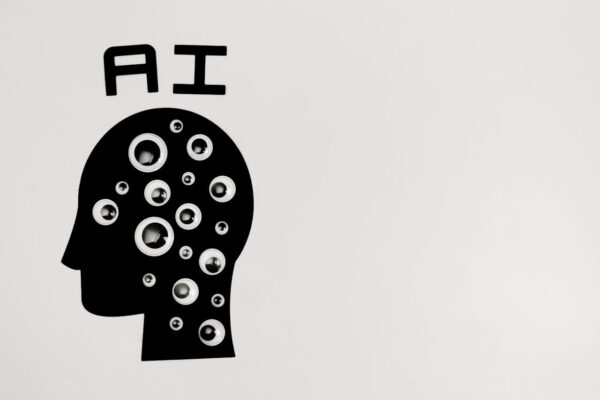User-centric design, an approach centred on tailoring products or services to meet user needs and preferences, stands as a cornerstone in modern design methodologies. In web development, its significance has escalated as user experience (UX) takes centre stage in determining the triumph of a website. A website meticulously crafted with user-centric principles not only fosters heightened engagement but also augments conversion rates, thereby propelling business prosperity.
In this article, we delve into the pivotal role of user-centric design in shaping the landscape of web development.
Principles of User-Centred Website Design
User-centred design principles are pivotal, ensuring websites align with their audience’s needs and preferences. Let’s examine four key principles of user-centred design and their role in crafting user-centric websites.
User Research
User research is the cornerstone of user-centred website design. It involves gathering insights into the needs, preferences, and behaviours of the target audience. Through techniques such as surveys, interviews, and observation, designers gain a valuable understanding of user demographics, motivations, and pain points. This knowledge informs design decisions, ensuring that websites are tailored to meet user expectations and deliver relevant content and functionality.
Usability Testing
Usability testing is essential for evaluating the effectiveness of a website’s design in real-world scenarios. It involves observing users as they interact with the website, identifying usability issues, and gathering feedback on their experience. By conducting usability tests early and often throughout the design process, designers can identify and address potential problems before they impact the user experience. Usability testing helps ensure that websites are intuitive to navigate, easy to use, and meet the needs of their target audience.
Iterative Design
Iterative design is a fundamental principle of user-centred website design. It involves continuously refining and improving the website based on user feedback and testing results. Rather than striving for perfection in a single design iteration, designers embrace an iterative approach, making incremental changes over time. This allows for ongoing optimisation of the user experience, ensuring that the website remains relevant and effective in meeting user needs and preferences.
Visual Design
While functionality and usability are paramount, visual design plays a crucial role in creating an engaging and memorable user experience. Visual design encompasses elements such as layout, typography, colour scheme, and imagery, all of which contribute to the website’s aesthetic appeal and usability. By carefully crafting the visual elements of a website, designers can create an immersive and cohesive experience that resonates with users and reinforces the brand identity.
By embracing these principles, designers can create websites that not only meet the needs and preferences of their target audience but also deliver exceptional user experiences that drive engagement and satisfaction.
Importance of User-Centred Design in Website Development
In website development, user-centred design is paramount. It places users at the core of the design process, ensuring websites are intuitive, engaging, and effective in meeting their goals. Here are ten reasons why user-centred design is essential in website development:
1. Enhanced User Experience
At the core of user-centred design lies the goal of delivering a seamless and enjoyable experience for website visitors. By understanding user needs and preferences, designers can create interfaces that are intuitive to navigate, content that is relevant and accessible, and interactions that are smooth and efficient.
2. Improved Usability
User-centred design focuses on making websites easy to use for all visitors, regardless of their level of familiarity with technology. By incorporating usability principles such as simplicity, consistency, and feedback, user-centred ensures that users can accomplish their tasks quickly and efficiently.
3. Increased User Satisfaction
When users find a website easy to use and navigate, they are more likely to feel satisfied with their experience. User-centred design aims to delight users by anticipating their needs and providing solutions that exceed their expectations, leading to higher levels of satisfaction and positive feedback.
4. Higher Conversion Rates
A user-centred approach can lead to higher conversion rates as websites are designed to guide users through the conversion funnel seamlessly. By removing barriers to conversion and providing clear calls to action, user-centred optimises the user journey and encourages users to take the desired actions, whether it’s making a purchase, signing up for a newsletter, or filling out a form.
5. Reduced Bounce Rates
Websites that are difficult to use or navigate often experience high bounce rates, where visitors leave the site after viewing only one page. User-centred design helps reduce bounce rates by providing visitors with a positive experience that encourages them to explore further and engage with the content.
6. Better Accessibility
Accessibility is a key consideration in user-centred design, ensuring that websites are usable by people of all abilities, including those with disabilities. By following accessibility guidelines and standards, designers can create websites that are inclusive and accessible to a wider audience.
7. Increased Brand Loyalty
When users have a positive experience on a website, they are more likely to return in the future and become loyal customers. User-centred design fosters brand loyalty by building trust and rapport with users through consistent, intuitive, and delightful interactions.
8. Data-Driven Decision Making
User-centred design relies on data and feedback to inform design decisions. By collecting and analysing user data, such as user behaviour, preferences, and feedback, designers can make informed decisions that lead to continuous improvement and optimisation of the website.
9. Competitive Advantage
In today’s competitive digital landscape, user experience has emerged as a key differentiator among websites. By prioritising user-centred design, organisations can gain a competitive advantage by offering superior experiences that set them apart from their competitors.
10. Business Growth and Success
Ultimately, user-centred design contributes to the overall success and growth of a business. By delivering exceptional user experiences, websites can attract more visitors, convert them into customers, and foster long-term relationships that drive business growth and profitability. User-centered design is not just a design approach; it’s a strategic investment in the success of a website and the business it represents.
How to Transition to a User-Centric Web Design Approach?
Transitioning to a user-centric web design approach is essential for businesses seeking to enhance their online presence and better serve their target audience. This shift in focus, from a purely product-driven approach to one centred around the needs and preferences of users, can lead to improved user satisfaction, increased engagement, and, ultimately, greater business success. Let’s explore six effective ways to transition to a user-centric web design approach.
1. Conduct User Research
Start by gaining a deep understanding of your target audience through comprehensive user research. Utilise techniques such as surveys, interviews, and analytics to gather insights into user demographics, behaviours, and preferences. This data will serve as the foundation for informed design decisions that prioritise the needs of your users.
2. Create User Personas
Develop user personas based on the findings of your research. User personas are fictional representations of your typical users, outlining their goals, motivations, and pain points. By creating personas, you can humanise your target audience and ensure that your design decisions are aligned with their needs and behaviours.
3. Prioritise Usability Testing
Integrate usability testing into your design process to gather feedback from real users and identify areas for improvement. Conduct usability tests at various stages of development to validate design decisions and ensure that your website is intuitive and easy to navigate. Use the insights gained from testing to iterate and refine your design continuously.
4. Embrace Iterative Design
Transition to an iterative design process that prioritises feedback and continuous improvement. Rather than aiming for perfection in a single iteration, embrace a cycle of prototyping, testing, and refining. This iterative approach allows you to respond to user feedback, address issues promptly, and optimise the user experience over time.
5. Foster Cross-Disciplinary Collaboration
Encourage collaboration between designers, developers, marketers, and other stakeholders to ensure a holistic approach to user-centered design. By involving team members from diverse backgrounds and skill sets, you can leverage a range of perspectives and expertise to create more effective solutions that meet the needs of your users.
6. Educate and Empower Your Team
Invest in training and professional development opportunities to equip your team with the knowledge and skills needed to embrace a user-centric approach to web design. Provide resources, workshops, and ongoing support to help team members understand the importance of user experience and incorporate user-centred design principles into their work.
By implementing these six strategies, you can successfully transition to a user-centric web design approach and create websites that deliver exceptional experiences for your users. Prioritising user needs and preferences will not only drive engagement and satisfaction but also contribute to the long-term success of your business in the digital landscape.
Build a User-Centric Website with Digital Rescue
Transitioning to a user-centric web design approach is not just a trend; it’s a strategic investment in the success of your online presence. By prioritising the needs and preferences of your users, you can create websites that deliver exceptional experiences, drive engagement, and, ultimately, propel your business forward in the digital landscape.
By conducting thorough user research, creating user personas, prioritising usability testing, embracing iterative design, fostering collaboration, and empowering your team, you can successfully transition to a user-centric approach and reap the rewards of improved user satisfaction and business success.
Are you ready to take your website to the next level with a user-centric design approach? Trust Digital Rescue today and learn how our team of experts can help you build a website that puts your users first and drives results for your business in Melbourne and beyond. Contact us today!



